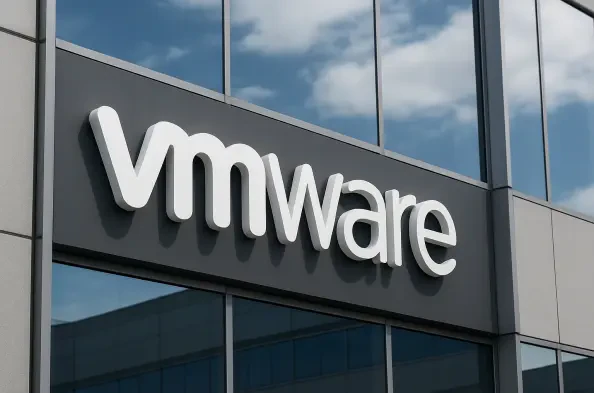In a digital landscape where cybersecurity threats loom larger than ever, a recent advisory from Broadcom has sent ripples through the IT community by uncovering critical vulnerabilities in VMware vCenter Server and NSX products. These flaws, detailed in advisory VMSA-2025-0016, have been classified as “Important” due to their potential to allow attackers to manipulate systems and extract sensitive information. With exploitation tactics ranging from username enumeration to email spoofing, the risks are significant for organizations relying on these widely used virtualization and networking solutions. The urgency to address these issues cannot be overstated, as the vulnerabilities affect a broad spectrum of products, including VMware Cloud Foundation and Telco Cloud. This revelation raises pressing questions about the security of virtual environments and the steps needed to safeguard critical infrastructure from sophisticated attacks that could compromise entire networks.
Unveiling the Specific Threats
The advisory highlights three distinct vulnerabilities, each carrying a high CVSSv3 score and posing unique challenges to system security. The first, identified as CVE-2025-41250 with a score of 8.5, centers on SMTP header injection in vCenter Server. This flaw permits attackers with permissions to create scheduled tasks to craft malicious notification emails, potentially exposing internal email addresses. Such exposure can pave the way for phishing campaigns through spoofed messages, amplifying the risk of credential theft. The implications are severe, as attackers could use these emails to trick users into revealing sensitive data or clicking on harmful links, thereby gaining deeper access to the system. Beyond the immediate threat, this vulnerability underscores the importance of scrutinizing email configurations and access controls to prevent unauthorized manipulation of communication channels within an organization’s infrastructure.
Moving to the next set of issues, CVE-2025-41251, with a CVSSv3 score of 8.1, exploits a weak password recovery mechanism in NSX. Unauthenticated attackers can confirm valid usernames by submitting email addresses or usernames to the recovery endpoint and observing binary feedback. This flaw essentially hands malicious actors a tool for reconnaissance, enabling them to identify active accounts for further targeting. Additionally, CVE-2025-41252, scored at 7.5, leverages timing differences in NSX login responses to infer valid usernames, allowing rapid enumeration through automated tools. Together, these vulnerabilities simplify the initial stages of an attack, providing half of the credentials needed for account compromise. When paired with tactics like password spraying or brute-force attacks, the potential for network infiltration and lateral movement grows exponentially, making these flaws a gateway to broader security breaches.
Implications of Username Enumeration
A recurring theme across these vulnerabilities is the danger of username enumeration, a critical tactic in an attacker’s arsenal. By identifying valid usernames, malicious actors gain a foothold to launch more targeted attacks, such as phishing or credential stuffing. This reconnaissance method, though seemingly basic, significantly heightens the risk profile of affected systems by revealing essential information that can be exploited in combination with other techniques. For organizations using VMware products, this means that even a minor lapse in security could lead to cascading failures across the network. The high CVSS scores associated with these flaws reflect not only their ease of exploitation but also the profound impact on system integrity. Without adequate defenses, attackers can move laterally within the environment, accessing sensitive data or disrupting operations with alarming efficiency, highlighting a critical need for robust protective measures.
The broader implications of these vulnerabilities extend to the diverse range of environments where VMware solutions are deployed, from on-premises data centers to cloud-based infrastructures. The ability of attackers to gather information through enumeration tactics underscores the fragility of systems that fail to secure authentication mechanisms. When combined with social engineering or other exploits, these flaws can erode trust in virtualized environments, which are often considered the backbone of modern IT operations. The consensus among security researchers, including those credited in the advisory, points to the low complexity of exploiting these issues, making them attractive targets for cybercriminals. As such, the focus must shift toward proactive strategies that not only address the current threats but also anticipate future risks in an ever-evolving threat landscape.
Urgent Steps for Mitigation
In response to these critical vulnerabilities, Broadcom has released patches for all supported versions of the affected products, and administrators are strongly encouraged to apply them immediately. Delaying updates could expose systems to sophisticated attacks that leverage the disclosed weaknesses, potentially leading to significant data breaches or operational downtime. Beyond patching, additional measures are vital, such as monitoring authentication and recovery logs for any signs of unusual activity that might indicate an ongoing attack. Restricting permissions for scheduled tasks to only essential users can also limit the attack surface, while reviewing SMTP configurations helps prevent external header modifications. These steps, though resource-intensive, are necessary to fortify defenses against the specific exploitation methods outlined in the advisory, ensuring that systems remain resilient.
Looking ahead, the emphasis on tightened access controls cannot be ignored as a long-term strategy for safeguarding VMware environments. Organizations should prioritize ongoing vigilance by implementing strict monitoring protocols and regularly auditing user access to critical systems. The absence of workarounds for these vulnerabilities reinforces the urgency of applying patches without delay, as temporary fixes are not an option. Moreover, the trend of enumeration attacks signals a broader need for enhanced security awareness and training to recognize phishing attempts that often follow such exploits. By adopting a multi-layered approach to security, including both technical solutions and policy enforcement, businesses can better protect their virtual infrastructures. The lessons learned from this advisory serve as a stark reminder of the importance of swift action and comprehensive risk management in maintaining the integrity of digital assets.






